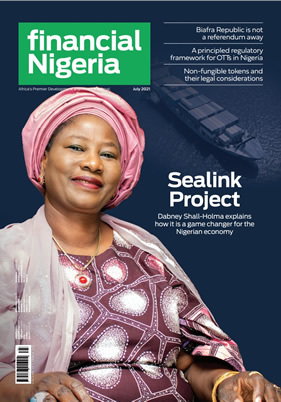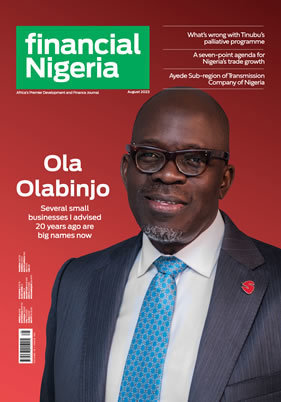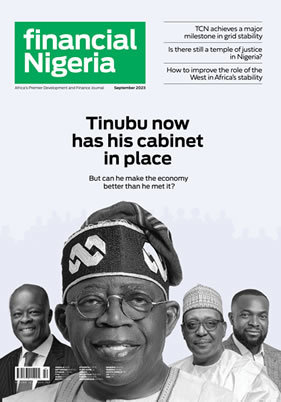
Raj Kulasingam, Senior Counsel, Dentons UKMEA LLP
Follow Raj Kulasingam
![]() @rajkool03
@rajkool03
Subjects of Interest
- Finance and Investment
- Frontier and Emerging Markets
- Private Sector Development
The lion of Ethiopia awakens 12 Oct 2015
Ethiopia, once only best known for the famine of 1984/85 and made famous by Bob Geldof's Live Aid concert, has become known as a preferred investment destination in Africa. Also, in July, Ethiopia had the first visit by a serving American president when Barack Obama met Ethiopian Prime Minister, Hailemariam Desalegn, in Addis Ababa.
I recently met an Ethiopian private equity professional, Berhane Demissie, based in Addis Ababa. Demissie is one of the many returning Ethiopian diasporans. As a speaker at a Wharton College Alumni Africa Event that Dentons co-sponsored, I also recently met Mr. Terefe Meriyane and Mr. Abiy Berhane, both from the Ethiopian Embassy in London.
A brief recent history of Ethiopia
The army toppled Emperor Haile Selassie's feudalist regime in 1974. Ethiopia was then ruled by the Provisional Military Administrative Council – known as "the Derg". Between 1975 and 1987, the Derg embraced communism and executed and imprisoned tens of thousands of its opponents without trial.
In 1987, Mengistu Haile Mariam abolished the Derg, establishing the People's Democratic Republic of Ethiopia. After years of warfare by a coalition of ethnic-based parties, Mengistu was overthrown in 1991.
Until 1991, Ethiopia's economy was heavily controlled by the state. Since then, major reforms have been undertaken with many state-owned enterprises sold to private companies.
Deals, deals, deals
Foreign investors are moving into Ethiopia with deals being done in a variety of sectors. There is talk of Ethiopia surpassing Bangladesh as the country to source and produce textiles (Hennes and Mauritz have turned up). Unilever is building a factory. Diageo and Heineken and PE firm, Duet, have bought breweries. KKR have invested in a flower business. Millionaires are being created monthly and the real estate market is booming.
A report in 2013 stated that the number of US-dollar millionaires (about 2,700 – still far behind countries like Kenya and Nigeria – but rising to 4,700 by 2020) in Ethiopia rose by 108% between 2007 and 2013. This growth is faster than any other country in Africa. One challenge for the Government is to make this wealth trickle down to the masses where more than one third of the population lives on less than $1.25 a day.
Growth
Government officials claim an average GDP growth of 10 to 11 percent over the past 7 years. International experts, including the IMF, suggest that actual growth numbers average 5 to 7 percent. The reality is that both figures are respectable and investors are heading to Addis Ababa.
What's driving the interest in Ethiopia
Much of this investment is credited to a private sector-friendly Government which has implemented laws and policies that promote local entrepreneurship and foreign investment. In addition to the growth figures, the following factors also contribute to the Ethiopian story:
- increasing numbers of well-educated and business savvy (with the requisite MBAs from prestigious institutions) diaspora returning home;
- construction of infrastructure – 60% of government spending is directed towards public investment projects in sectors such as power, health, education, agriculture and transport (e.g. a 5000km railway network linking Addis Ababa to Djibouti – the main sea port for Ethiopia – is being built which will dramatically reduce transportation time and costs); and
- prudent government spending controls with low and stable deficits.
Other reasons (pointed out by Mr Meriyane) on why an investor should invest in Ethiopia include:
- young , abundant, inexpensive and well-educated labour force (population of 96,506,031 in 2014);
- simple, transparent and quick investment approval procedures;
- a successful privatisation programme for more than 20 years;
- availability of competitive incentive packages for foreign investors;
- location allows it to be a regional hub with access to a wide market – including duty free access to COMESA – which has 420 million people in 19 member states;
- duty-free access to the US and EU through the Africa Growth and Opportunity Act and EU Anything But Arms facility;
- various tax holidays, duty exemption schemes and carry forward of losses during the tax holiday;
- investment licences/business permits being issued within 4 hours of application; and
- tax identification number being issued within 24 hours of application.
Although Ethiopia has made strides in making it easy for investors to do business in the country, it is still only ranked 132 out of 189 in the World Bank's Ease of Doing Business Report 2015 (down from 129 in 2014).
Moody's outlook for Ethiopia
Moody's recently (May 2015) gave a rating of B1 Stable for Ethiopia's government bond stating that the rating is supported by the country's strong growth prospects, prudent fiscal management and large and stable donor inflows. However, Ethiopia's relatively small economy, low per capita income and weak institutional strength constrained the rating.
Moody's further pointed out that Ethiopia's rating remains constrained by susceptibility to geopolitical risks; reliance on its large and volatile agricultural sector (susceptible to poor harvests caused by droughts); and price volatility of major export commodities, specifically coffee and gold.
Plug in now for electricity tomorrow
Like many other African countries, access to power in Ethiopia is low with two-thirds of its citizens having no electricity. Today, Ethiopia has roughly 2,300 megawatts (MW) of installed generation capacity with a large part of its population not having access to electricity. This is limiting its ability to grow, develop and industrialise. With per capita income of just $550 (World Bank, 2014), very few can afford a generator.
However, times are changing with the completion of the 1.87GW Gilgel Gibe III Dam by the end of 2015; construction of the 1GW Corbetti geothermal project – first phase to come online in 2018; construction of the 6GW Grand Ethiopian Renaissance Dam on the Blue Nile River – completion expected in 2017. This is expected to enable Ethiopia to export energy to neighbouring Kenya, Somalia, and Djibouti.
On completion of these projects, generating capacity will increase to more than 10,000MW. The Government is counting on this surge of power capacity to drive Ethiopia's economy, propel its industrialisation and promote further manufacturing.
One key opportunity for investors is that the government is opening up the power generation sector to private investors. However, no private sector-financed power transaction in Ethiopia has got to financial close yet. So the jury is out as to whether bankable power deals can be completed in Ethiopia. However, some well-known private investors are voting with their wallets by developing power projects in Ethiopia.
Agriculture to manufacturing
Ethiopia is highly dependent on primary agricultural commodity exports such as coffee, oilseeds, pulses and livestock products – all very sensitive to price fluctuations and weather patterns. As the Moody's reports pointed out, the reliance on agriculture affects Ethiopia's ratings. The government is trying to create a structural change in the economy by promoting the manufacturing sector. The availability of cheap and reliable power will be a key platform for achieving this ambition.
The challenges
As with any emerging market (particularly one that is transitioning from a central command economy to a free market), there are challenges to doing business in Ethiopia. These include limited capacity of the civil service to execute policies and programmes; lack of experience in technical/financial matters – particularly in complex matters such as non-recourse project financing of infrastructure projects; restrictions on international involvement in sectors such as financial services, power, telecoms and air services; paucity of information on all aspects of life including investment opportunities; bureaucracy (e.g. on company registration) with relatively low levels of computerisation/digitisation and intermittent and low internet access (approximately only one percent of Ethiopians have internet access); and complicated land tenure issues.
My colleague, Patrick Larrive, can attest to some of these challenges from advising 54 Capitals on numerous PE deals in Ethiopia. However, his key message is that these hurdles can be overcome and deals get done.
Corruption
Whenever people talk about investing in Africa, the conversation inevitably turns to corruption with questions on how easy it is to do business in the relevant country without paying bribes. Ethiopia comes out of this discussion relatively well.
Whilst Ethiopia ranked 111 out of 177 countries (in 2013) in Transparency International's Corruption Perception Index (CPI), international investors are consistent in reporting that they are not faced with demands for bribes. The Government has stated it has a zero tolerance policy for corruption and various measures have been put in place to eliminate corruption and opportunities to take bribes.
For example, the 2009 Proclamation for the Disclosure and Registration of Assets of government officials, employees and constituencies requires the registration of the assets and financial interests of federal officials. In addition, there have been some high profile prosecutions of tax officials on corruption charges.
An island of stability
According to the UK Government, Ethiopia “... continues to be a relative 'island of stability' in the volatile Horn of Africa (though religious, ethnic and political tensions do exist). This has helped it to enjoy impressive economic growth over the past decade. There is, however, insecurity in parts of Ethiopia's Somali Region, particularly in the Ogaden. In the western Gambella and Benishangul-Gumuz Regions, competition over land and other resources can lead to occasional inter-communal clashes.”
Eritrea broke away from Ethiopia in 1991 after a brutal 30-year independence struggle and was at war with Ethiopia from May 1998 to June 2000. As recently as 7 September this year, Eritrea accused Ethiopia of "sabre-rattling" and of threatening to invade it. However, Berhane believes that most people do not believe this to be a serious threat and “it's just that the two countries are not talking”.
Teff
It would be remiss of me to write about Ethiopia and not talk about njera (the national dish of Ethiopia and Eritrea) and teff (from which it is made). Although teff has been a staple of traditional Ethiopian cooking for thousands of years, this gluten-free grain is quickly climbing to super-grain status across the world. (Watch out, quinoa!)
Teff is a gluten-free whole grain that, despite its size (about the size of a poppy seed), is mineral-rich and high in protein. In fact, the Whole Grains Council estimates that Ethiopians get about two-thirds of their dietary protein from teff. And long-distance runners from Ethiopia have credited their energy and health to the grain.
The Ethiopian government is promoting teff production and believes that the grain could play an important role in school meals and emergency aid programmes, and help reduce malnutrition. This is also creating opportunities for entrepreneurs looking to cash in on teff's super food status both at home and abroad.
Hope and belief
Ethiopia today is a very different place to the pictures I saw on television as I watched Live Aid from my living room in Kuala Lumpur. It gives me a huge sense of pleasure to hear that when people talk about Ethiopia today, it's no longer about famine, hunger, war and bloodshed. Instead it's mostly about power, investment and development. Although, as President Obama pointed out, the lack of free speech, a free press and free political opposition is still an issue in Ethiopia.
However, on balance, perhaps Ethiopia today is testament to Teddy Roosevelt's philosophy: “Believe you can and you're halfway there and with self-discipline most anything is possible.”






